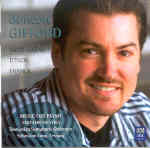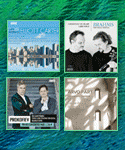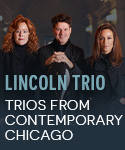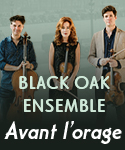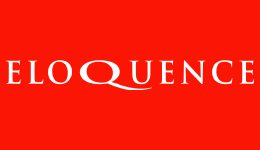Australian pianist Duncan Gifford does himself proud in a program that adds up to more than the sum of its parts. Saint-Saëns’ Fifth Piano Concerto (“Egyptian”) deserves much more popularity than it currently enjoys, and if Gifford does not efface memories of Jeanne-Marie Darré or Magda Tagliaferro, he plays the music very stylishly. His scales in the opening movement are gorgeous, and lest anyone sneer, it’s worth noting that Saint-Saëns’ music very much thrives (as does Mozart’s) on mastery of the “the basics”. My only quibble is that Gifford has a tendency to allow himself too much scope for rubato in solo passages, and so allows the tension to relax a touch too often for my taste; but this is a very good performance, and the disc only gets better as it goes.
The D’Indy Symphony on a French Mountain Air is one of those lovely, Romantic pieces that never should have dropped out of the repertoire. Like so much 19th-century French music, it’s beautifully written, tuneful, more substantial than many are willing to credit, and far more difficult to play than most potential soloists suppose. I vividly remember a concert in which I was performing in the orchestra, and the hot-shot Russian pianist who had been engaged to play it (and who could toss off a Rachmaninov concerto before breakfast) had to withdraw on account of his not being able to learn the work in time. Gifford certainly knows the music, clearly enjoying the music’s poetry and (in the finale) wit. He launches the latter with impressive clarity and rhythmic control. Franck’s Les Djinns makes a logical disc companion and an excellent “encore”. The only reason it’s not heard more often is because it’s so short–but what a lovely work it is!
The Tasmanian Symphony Orchestra is not a top-flight ensemble, though it plays well under Sebastian Lang-Lessing. I would have liked more character to the wind playing, the oboe solos in the Egyptian Concerto particularly, as well as more forward sectional balance, but otherwise the ensemble accompanies sympathetically. The sound, though, is a big disappointment–boxy and “canned”. The opening of the Franck has a surprisingly high level of ambient noise, almost like broadcast static, and although the piano is well balanced against the orchestra, the high frequencies of both are glassy. It’s a shame, because Gifford is a worthy artist and the repertoire is hardly the usual stuff. If you’re not bothered by sonic considerations, you may want to consider this.






















